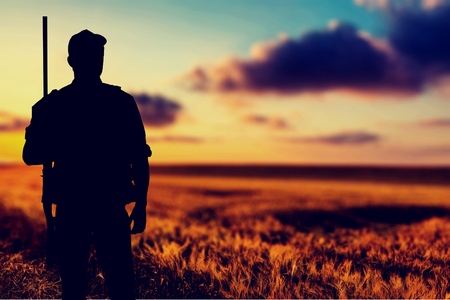As the leaves change color and the temperatures begin to drop here in Saskatchewan, we’re gearing up for the start of the new season—hunting season that is! Whether you’re an experienced hunter dreaming about this year’s trophy or a beginner ready to apply what you’ve learned at the range to the field, the dawning of a new hunting season is thrilling for everyone.

The goals of a seasoned pro might differ from those of a newcomer, but every hunter’s number one priority should be the same: safety. Before you head to the field, it’s important to learn or refresh your knowledge of the best practices for hunting safety.
Once you master these essential rules of the hunt, you’ll be all set to book your first trip of the year!
Always assume your gun is loaded.
Firearms should always be handled with extreme care. A lot of hunting accidents happen because people get too comfortable and lackadaisical with their weapons—do not fall victim to this mindset.
Always treat your gun and any one that’s handed to you as if it’s loaded, even if you’re told it’s not. Don’t point at anything other than your target, and don’t touch the trigger until you’re ready to shoot.
Be sure of your target.
You should always be operating your firearm within your Zone-of-Fire—the 45-degree range directly in front of you. This is the only area you can see reliably, and you should never shoot anything outside of it. You need to be 100% sure you’ve correctly identified your target and that it’s within this safe zone before you take a shot.
Also keep in mind that projectiles can fly a very long distance, so you need to know what’s behind and around your target as well. If you don’t know what’s behind it, don’t shoot.
Prepare for the weather.
Take the time to check the temperature and conditions before you head out on your hunting trip. Getting caught unawares in inclement weather is never any fun and can end up being a serious safety hazard.
If it’s going to be cold, make sure you bring enough layers to keep you warm. Sitting out in the field for hours at a time in freezing temperatures puts you at considerable risk for hypothermia. Moisture-wicking base layers are a must for all conditions, to keep you dry and warm by staving off sweat, rain, and snow.

Dress appropriately.
The most important thing to remember when you dress for a hunt is that you cannot blend in with your surroundings. Don’t wear a lot of neutral colors, earth tones, or camouflage. Other hunters on the field need to be able to readily identify you as a peer, not a moving target.
Blaze orange is your best bet for hunting attire. That, or any other fluorescent hue, will be sure to catch the attention of anyone in your area.
Tell someone where you’re going.
Even if you follow every safety rule to a T, you never know when an accident might happen on a hunting trip. Sometimes you might end up in dangerous circumstances that are out of your control. That’s why a friend or relative should always know where you are.
You should also make sure that person knows when you plan to return, so someone will know if something’s not right.
Practice first.

A hunter who doesn’t know how to properly use their weapon is a threat to themselves and everyone around them. If you’re not hitting the target regularly at the range, you shouldn’t be on the field—no matter how badly you may want to be.
The safest hunter is an accurate shot. Spend as much time necessary practicing with your gun before you expose others to it. A bad shot puts every hunter on the field at risk, and the more often you make them the more dangerous you are.
If you’re looking to hone your safety skills and put your hunting abilities to the test, take a trip out to the hunting grounds at Lawrence Bay Lodge this fall! Challenge yourself by trying to take an incredible bull moose, or even one of the bears roaming around our camps. We offer guided trips, tent camps, outpost cabins, and cozy accommodations for your convenience.
Visit us online or give us a call to schedule your hunting trip this season!

